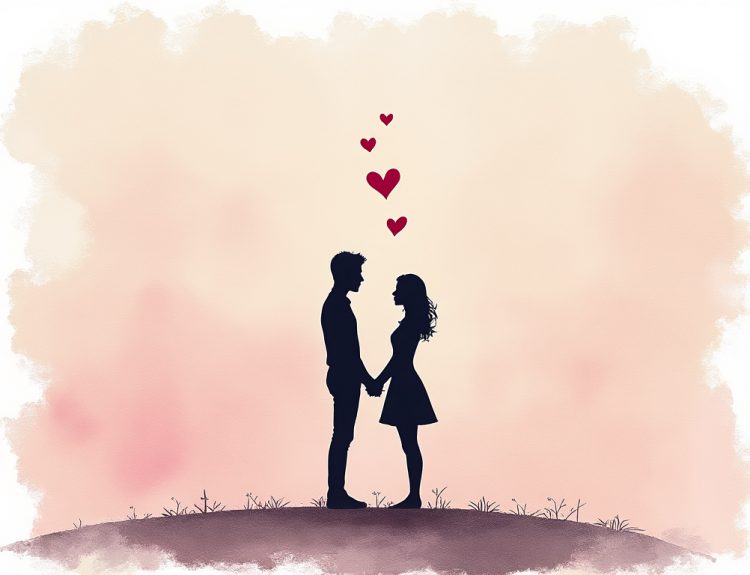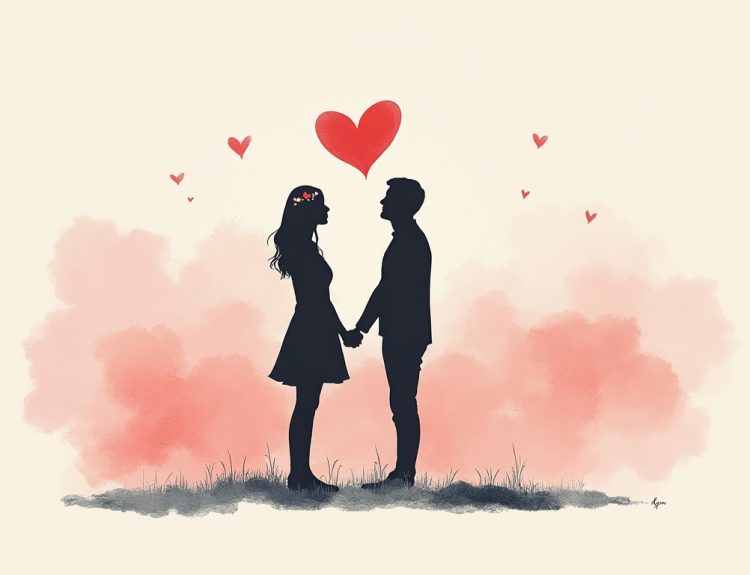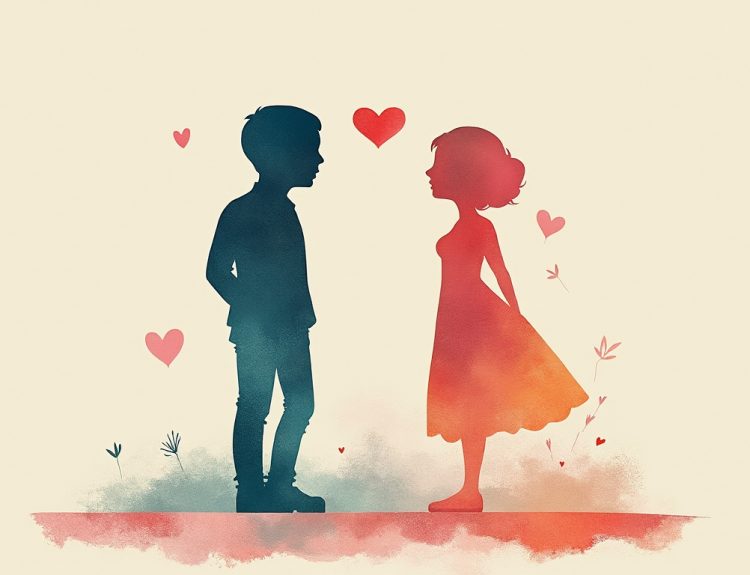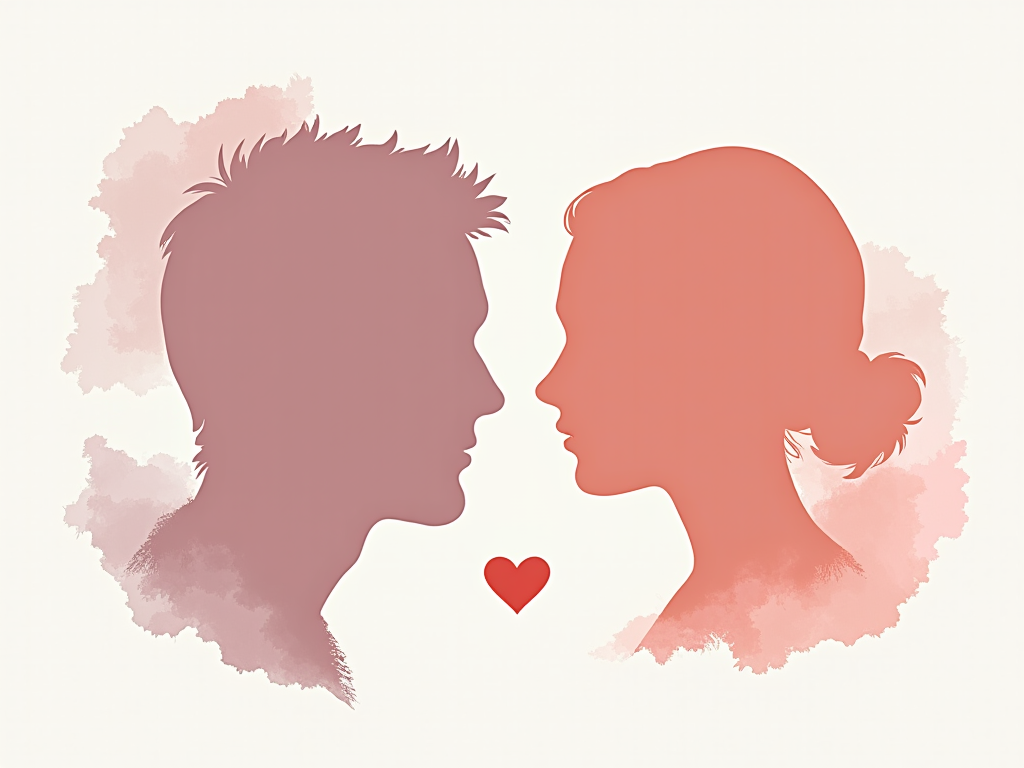
Do Women Find Mustaches Attractive? The Psychology Behind Facial Hair Preferences
Reading time: 12 minutes
Table of Contents
- Introduction: The Facial Hair Phenomenon
- The Evolutionary Psychology of Facial Hair
- What Research Reveals About Mustache Attraction
- Cultural Influences on Facial Hair Preferences
- The Psychology Behind Women’s Preferences
- Different Mustache Styles and Their Appeal
- Real Stories: Mustaches in Modern Dating
- Practical Considerations for Facial Hair in Dating
- Beyond the Mustache: What Really Matters in Attraction
- Frequently Asked Questions
Introduction: The Facial Hair Phenomenon
The mustache—few facial features have experienced such dramatic swings in popularity throughout history. From the distinguished handlebar mustaches of the Victorian era to the iconic Magnum P.I. look of the 1980s, to the ironic hipster mustaches of the 2010s, facial hair trends continue to evolve in fascinating ways. But beyond the trends and fashion statements lies a more fundamental question: Do women actually find mustaches attractive?
This isn’t just about aesthetics—it’s about understanding the complex interplay between biology, psychology, and culture that shapes our attraction preferences. Whether you’re considering growing a mustache, already sport one proudly, or simply find yourself curious about facial hair dynamics in modern dating, this exploration offers valuable insights into how facial hair influences attraction.
What makes this topic particularly interesting is that mustache preferences aren’t universal or static—they vary dramatically across cultures, time periods, and individuals. While one woman might swoon over a well-groomed handlebar, another might prefer a clean-shaven face. Understanding these preferences can offer fascinating insights into human attraction overall.
The Evolutionary Psychology of Facial Hair
To understand modern preferences for facial hair, we need to step back and examine its evolutionary significance. Throughout human history, facial hair has served as a potent visual signal of male sexual maturity and hormone production. The ability to grow a full beard or mustache indicates high testosterone levels, which from an evolutionary standpoint, can signal genetic fitness and reproductive capability.
Sexual Dimorphism and Mate Selection
Facial hair represents one of the most visible forms of sexual dimorphism in humans—physical differences between males and females. Evolutionary psychologists suggest that women may have evolved to respond to these secondary sexual characteristics as indicators of male genetic quality.
Dr. Barnaby Dixson, a leading researcher in human behavioral ecology, explains: “Beards and mustaches accentuate jaw size and the masculinity of facial features. These traits have historically been associated with dominance, strength, and reproductive fitness—all qualities that could benefit potential offspring.”
However, this doesn’t necessarily mean all women are hardwired to prefer facial hair. Human mate selection is remarkably complex, balancing numerous competing preferences and priorities beyond just physical signals of testosterone.
The Dual-Mating Strategy Theory
One fascinating theory in evolutionary psychology is the dual-mating strategy hypothesis. This suggests women may have different preferences for male traits depending on whether they’re seeking short-term or long-term relationships. According to this theory, more traditionally masculine features (potentially including facial hair) might be preferred for short-term relationships, while less pronounced masculine traits might be favored for long-term partnerships.
Research by psychologist Dr. Lynda Boothroyd found that women often select different facial types depending on relationship context, with more feminine male faces sometimes preferred for long-term relationships due to perceptions of greater warmth and cooperativeness.
What Research Reveals About Mustache Attraction
While anecdotal evidence about facial hair preferences abounds, what does scientific research actually tell us? Several rigorous studies have investigated women’s responses to different facial hair styles with some surprising results.
The Heavy Beard vs. Light Stubble Debate
In a landmark 2013 study published in the journal Evolution & Human Behavior, researchers showed women photographs of men with varying degrees of facial hair, from clean-shaven to full beards. The results? Women consistently rated men with heavy stubble as most attractive, followed by light stubble. Full beards and clean-shaven faces received lower overall attractiveness ratings.
Interestingly, while full beards weren’t rated highest for general attractiveness, they were associated with greater perceptions of parenting ability and healthiness. This suggests facial hair preferences might shift depending on what qualities a woman is prioritizing in a potential partner.
As for mustaches specifically, the research presents a more complex picture. When isolated from other facial hair, mustaches alone tend to receive lower attractiveness ratings than either stubble or full beards in most studies. However, this finding varies significantly across different age groups and cultural contexts.
Age-Related Preference Patterns
Research from dating platforms provides interesting insights into how age affects mustache preferences. Data analysis from one major dating app revealed that women under 30 were 31% less likely to express interest in men with mustaches compared to clean-shaven men. However, women over 40 showed a 15% higher preference for mustached profiles.
This age-related difference may reflect changing cultural associations with mustaches across generations, with older women potentially associating mustaches with positive masculine archetypes from their formative years.
Facial Hair Attractiveness Ratings Visualization
Based on composite data from facial hair attraction studies. Percentages represent average attractiveness ratings.
Cultural Influences on Facial Hair Preferences
While evolutionary factors may establish baseline tendencies in facial hair preferences, cultural influences play an enormous role in shaping what’s considered attractive in any given time and place.
Historical Perspectives on Mustaches
Throughout history, mustaches have carried powerful cultural symbolism. In Victorian England, a well-groomed mustache was practically mandatory for men of certain social standings, signaling respectability and maturity. During the 1970s, mustaches became associated with sexual liberation and masculinity, while the clean-shaven look dominated corporate America in the 1980s and 1990s.
Dating coach Miranda Christy notes: “When I work with clients, I’ve observed that women’s facial hair preferences often correlate with the popular masculine ideals from their teenage years. The cultural icons we admired during those formative years create a template that can influence attraction patterns well into adulthood.”
Geographic and Cultural Variations
Facial hair preferences also vary dramatically across different cultures and regions. In some Middle Eastern cultures, beards carry religious significance and are widely considered attractive. In parts of East Asia, clean-shaven faces have traditionally been preferred. Western cultures have experienced the most dramatic swings in facial hair fashion.
A cross-cultural survey from 2018 revealed striking differences in mustache preferences:
| Region/Country | Mustache Preference Rating | Preferred Facial Hair Style | Cultural Associations | Trend Direction |
|---|---|---|---|---|
| North America | 42% | Light stubble | Casual masculinity, approachability | Increasing (especially styled mustaches) |
| Western Europe | 38% | Clean-shaven or light stubble | Professionalism, modernity | Stable with seasonal variation |
| Middle East | 73% | Full beard with mustache | Maturity, wisdom, religious significance | Consistently high |
| East Asia | 25% | Clean-shaven | Youthfulness, neatness | Slowly increasing |
| Latin America | 58% | Mustache or short beard | Masculinity, maturity | Stable with regional variations |
The Psychology Behind Women’s Preferences
What drives individual preferences for facial hair beyond evolutionary and cultural factors? Psychological research offers fascinating insights into how personality, past experiences, and individual differences shape what women find attractive.
Personality Correlations with Facial Hair Preferences
Research suggests that women’s personality traits may correlate with their facial hair preferences. A 2020 study found that women who scored higher on openness to experience were more likely to rate facial hair positively, while those scoring higher on neuroticism often preferred clean-shaven faces.
Dr. Elaine Hatfield, a social psychologist specializing in attraction, explains: “Facial hair sends nonverbal cues about personality and values. Women who value tradition and conventional gender roles may respond more positively to facial hair as a signal of traditional masculinity. Conversely, women who prioritize more progressive gender expressions might prefer less pronounced masculine signals.”
The Symbolic Perception of Mustaches
Unlike general facial stubble or beards, mustaches often carry very specific symbolic associations. Focus group research reveals that women commonly associate mustaches with:
- Confidence and distinctiveness – Willing to stand out from the crowd
- Retro or vintage sensibilities – Appreciation for classic styles
- Attention to personal grooming – Particularly for well-maintained styles
- Quirky or unconventional personality – Especially for more distinctive styles
- Maturity and established identity – Particularly for fuller mustaches
These symbolic associations can significantly influence attraction, depending on how well they align with what an individual woman values in a partner. As relationship therapist Dr. Maya Cohen notes, “Facial hair preferences often reveal what qualities a woman is prioritizing in her dating life at that moment—whether it’s stability and maturity or creativity and nonconformity.”
Different Mustache Styles and Their Appeal
Not all mustaches create the same impression. Different styles convey different personality traits and elicit varied responses.
Most Common Mustache Styles and Their Perceptions
Research into facial perception has revealed interesting patterns in how different mustache styles are perceived:
- Classic Chevron (think Tom Selleck): Rated highest for masculinity and maturity. Women in surveys associate this style with reliability and confidence. Often preferred by women over 35.
- Handlebar Mustache: Perceived as the most distinctive and creative style. Associated with artistic personalities and individualism. Polarizing in attraction studies—women either strongly prefer or dislike this style.
- Pencil Mustache: Associated with precision and attention to detail. Often perceived as sophisticated but sometimes considered outdated. Receives mixed attraction ratings across age groups.
- The Stubble Mustache: Part of general facial stubble, this minimal style receives the highest overall attraction ratings. Perceived as low-maintenance and modern.
- The Horseshoe/Biker Mustache: Rated highest for perceived toughness and nonconformity. Generally receives lower attraction scores in mainstream studies but has strong subcultural appeal.
Grooming and Maintenance Factors
Across all styles, one consistent finding emerges: well-groomed facial hair always outperforms unkempt styles in attraction studies. A 2019 survey of 2,000 women found that 67% cited poor mustache maintenance as a major turn-off, regardless of their general feelings about facial hair.
Grooming expert Antony Morris explains: “A mustache requires commitment to proper care. A well-maintained mustache signals attention to detail and personal standards, qualities that are universally attractive regardless of the specific style.”
Real Stories: Mustaches in Modern Dating
Beyond statistics and studies, personal experiences provide valuable insights into how mustaches influence dating dynamics in the real world.
Case Study 1: Michael’s Dating Experiment
Michael, 32, participated in a three-month dating experiment where he alternated between being clean-shaven and sporting a well-groomed mustache, tracking his results on dating apps. “With identical photos except for my facial hair, I received about 30% fewer initial matches when displaying my mustache,” Michael reports. “However, the conversations I had with matches while having a mustache were significantly more engaging, with women often mentioning it as a conversation starter.”
His experience highlights an important nuance: while mustaches might reduce initial interest in some contexts, they can create more memorable impressions and serve as conversation catalysts—potentially leading to more meaningful connections with compatible matches.
Case Study 2: Samantha’s Preference Evolution
Samantha, 41, reflects on how her facial hair preferences have evolved: “In my 20s, I exclusively dated clean-shaven men. I associated facial hair with being unkempt or too bohemian. Now in my 40s, I actually find well-maintained facial hair, including mustaches, much more attractive. I think it signals a man who’s comfortable with his masculinity and not trying too hard to conform to corporate ideals.”
Samantha’s experience aligns with research showing how individual preferences can shift over time, influenced by changing personal values and life stages.
Practical Considerations for Facial Hair in Dating
For men considering how facial hair might impact their dating lives, several practical insights emerge from both research and real-world experiences.
Reading Individual Preferences
Given the significant variation in women’s facial hair preferences, how can you determine if your mustache is working in your favor? Dating coach Alexis King offers this guidance: “Pay attention to the types of compliments you receive. If women regularly comment positively on your facial hair, it’s clearly working for you. If you rarely receive comments or notice women seem surprised when seeing you without facial hair in old photos, your current style might not be optimizing your appearance.”
King recommends experimenting with different styles and being attentive to feedback. “Many men stick with a facial hair style out of habit rather than because it’s their most attractive option. Willingness to adapt shows confidence and self-awareness—both attractive qualities in themselves.”
The Confidence Factor
Perhaps the most consistent finding across both scientific studies and anecdotal evidence is that confidence significantly outweighs the specific facial hair style a man chooses. Psychologist Dr. Jennifer Rhodes explains: “Women consistently rate confidence as more important than physical features. A man who wears his chosen style—whether that’s clean-shaven or a full mustache—with genuine confidence will always be more attractive than someone sporting a trendy style that makes them self-conscious.”
This explains why some men with unconventional facial hair styles still experience great dating success—they own their distinctive look with authenticity and confidence.
Beyond the Mustache: What Really Matters in Attraction
While facial hair preferences provide a fascinating window into attraction psychology, it’s important to maintain perspective on what truly drives meaningful connections. The research consistently shows that facial features—including mustaches—represent just one small element in the complex chemistry of attraction.
Your Personal Facial Hair Roadmap
- Experiment thoughtfully: Try different styles to discover what feels authentic to you and receives positive feedback
- Prioritize quality grooming: Whatever style you choose, proper maintenance universally improves perception
- Consider context: Be aware of how your facial hair might be interpreted in different cultural, professional, and dating contexts
- Embrace authenticity: Choose a style that genuinely reflects your personality rather than chasing trends
- Remember the bigger picture: Focus more energy on communication skills, emotional intelligence, and personal growth—factors that matter far more in creating lasting attraction
What’s particularly empowering about facial hair research is that it highlights how significantly perceptions vary—there is no universal “most attractive” style. This means that rather than trying to optimize for general preferences, you’re better served by understanding your own facial features, personal style, and the types of partners you hope to attract.
Ultimately, the most attractive quality isn’t found in specific physical features but in authentic self-expression. Whether you choose to grow a magnificent mustache or remain clean-shaven, your comfort and confidence in that choice will always be more attractive than the specific style itself. What facial hair style resonates most with your authentic self?
Frequently Asked Questions
Do preferences for mustaches vary by age group?
Yes, research consistently shows significant age-related patterns in mustache preferences. Women under 30 tend to rate clean-shaven faces or light stubble as most attractive, while women over 40 show greater appreciation for more pronounced facial hair, including mustaches. This generational difference likely reflects the popular masculine ideals from different eras, as well as changing associations with maturity and masculinity. That said, individual preferences within any age group vary tremendously.
How should I decide whether a mustache suits me personally?
The most effective approach combines experimentation with honest feedback. Consider your facial structure (stronger jawlines often complement mustaches well), your personal grooming habits (are you willing to maintain it properly?), and your overall style aesthetic. Try growing different styles and document them with photos to compare. Seek input from trusted friends whose style sense you respect. Most importantly, pay attention to your own confidence—if a particular style makes you feel more self-assured, that confidence will likely enhance your overall attractiveness regardless of the specific style.
Can facial hair preferences indicate compatibility in other areas?
While facial hair preferences alone aren’t reliable indicators of overall compatibility, they can sometimes reflect broader value patterns. Research suggests that women with more traditional gender role expectations may show stronger preferences for masculine features including facial hair, while those with more progressive gender views might be less influenced by these secondary sex characteristics. However, these correlations are modest at best. What’s more meaningful is how someone responds to your authentic self-expression—a potential partner who appreciates your chosen style (whatever it may be) when you feel most confident in it may be recognizing and valuing your authentic self.
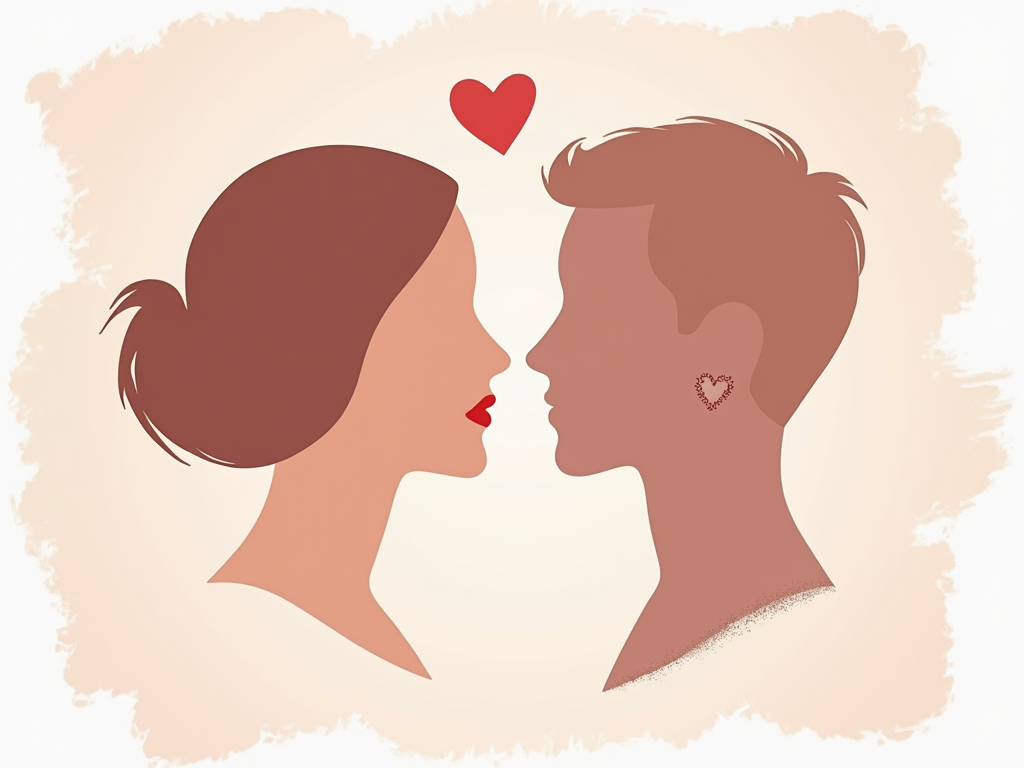
Article reviewed by Valentina Silva, Passion & Intimacy Guide | Reigniting Spark in Long-Term Relationships, on May 2, 2025

